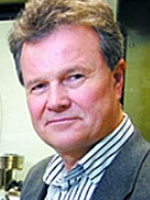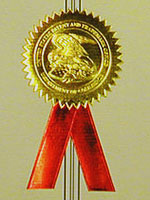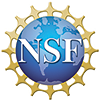Recent News
NQVL Design Phase Award
October 1, 2025
CHTM Joins NSF's NQVL Pilot Projects
August 9, 2024
OSE PHD, Dr. Xuefeng Li - Wins The Outstanding Interdisciplinary Graduate Programs Award
May 10, 2024
Dr. Ali Rastegari - 2024 OSE Best Dissertation Award Winner
May 10, 2024
News Archives
U.S. Patent issued to Stephen Hersee for selectively imaging a sample
July 18, 2017 - CHTM

Stephen Hersee
The Science & Technology Corporation at The University of New Mexico (STC.UNM or STC), announced that a new patent has been issued to Dr. Stephen Hersee, Professor Emeritus of the UNM Electrical and Computer Engineering Department and a faculty member of the UNM Center for High Technology Materials (CHTM).
As the technology transfer and economic development organization for UNM, STC.UNM protects and commercializes technologies developed at UNM by filing patents and copyrights and transferring the technologies to the marketplace.
U.S. Patent No. 9,696,531, “Solid-state microscope for selectively imaging a sample," was issued to Hersee by the U.S. Patent & Trademark Office (USPTO) on July 4, 2017.

Abstract
Exemplary embodiments provide solid-state microscope (SSM) devices and methods for processing and using the SSM devices. The solid-state microscope devices can include a light emitter array having a plurality of light emitters with each light emitter individually addressable. During operation, each light emitter can be biased in one of three operating states including an emit state, a detect state, and an off state. The light emitter can include an LED (light emitting diode) including, but not limited to, a nanowire based LED or a planar LED to provide various desired image resolutions for the SSM devices. In an exemplary embodiment, for near-field microscopy, the resolution of the SSM microscope can be essentially defined by the pitch p, i.e., center-to-center spacing between two adjacent light emitters, of the light emitter array.
Background
A conventional optical microscope uses optical lenses to gather light from an illuminated object and provide a magnified image of that object to the viewer. An additional light source, that itself may require conditioning optics, is often used to illuminate the sample for the conventional optical microscopes.
Such conventional optical microscopes, however, may have drawbacks and disadvantages for specific microscopic applications. For example, when conventional optical microscopes are used to observe biological samples, the strong illumination power of the conventional optical microscopes may irreversibly degrade biological samples, e.g., living cells. This is known as photo-toxicity in the prior art. In addition, it is desirable for modern microscopes to be small, light weight, and free of moving parts, which conventional optical microscopes are not.
Thus, there is a need to overcome these and other problems of the prior art and to provide a compact, portable and robust lens-less microscope that has a high image resolution and a controllable illumination power.
About Stephen Hersee
Stephen Hersee, PhD is a Professor Emeritus of the UNM Electrical and Computer Engineering Department and a CHTM faculty member.
In a long and distinguished career, Hersee was recently recognized with a 2012 STC.UNM Innovation Fellow award. In his recognition, STC.UNM notes:
In more than twenty years as a UNM researcher and inventor, Hersee has developed technologies that have led to many commercialization opportunities that have branched out to established companies in the semiconductor and electronics industries, start-up companies located in New Mexico and beyond. His contributions to the field have spurred the pace of research and development for the nascent field of “smart lighting.”
Hersee has pioneered the way in which gallium nitride (GaN) crystals, called nanowires for their microscopic size, are grown for use as semiconductors and light-emitting diodes (LEDs). Defect-free gallium nitride nanowires will be used for the manufacturing of lower-cost and higher-performance and quality GaN substrates and InGaN light-emitting diodes.

Hersee was also instrumental in the formulation of a National Science Foundation (NSF) Energy Research Center (ERC). He played a key role in securing the Smart Lighting ERC award in 2008. His work on innovative LED device design was a key part of securing that award. This ERC has since been renamed as Lighting Enabled Systems and Applications (LESA). With the Rensselaer Polytechnic Institute as the lead institution, academic research partners for LESA include Boston University, Thomas Jefferson University, and The University of New Mexico.


